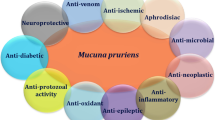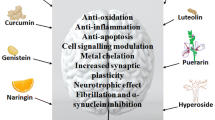Abstract
Parkinson’s disease (PD) is considered to be a highly severe neurological disorder. PD occurs due to a decrease in dopamine production by the degeneration of dopamine-secreting neurons. Genetic mutations, environmental toxins and lifestyle are some of the risk factors of the progressive neurodegenerative disorder PD. Parkin protein, which is encoded by the PARK gene, is one of the important proteins, which is one of the causative agents. The Parkin protein has several mutations which lead to the development of the disease. Apart from PD, the mutations in Parkin also showed to be responsible for the onset of diseases like cancers. It is reported that the E28K mutation in the Ubl domain of parkin is highly deleterious and responsible for the onset of melanoma. This necessitates the development of new therapeutics against PD. Molecules like levodopa, carbidopa, monoamine oxidase type B inhibitors (MBO inhibitors), dopamine agonists, anticholinergics and amantadine are some commonly used drugs used to treat PD. Recently, there have been increasing evidence which shows that cigarette smoking and consumptions of coffee and tea could have important roles in modulating the risk of PD. Therefore, we planned to analyse the molecular mechanism of the binding interactions of nicotine, caffeine and the polyphenol ( −)-epigallocatechin-3-gallate (EGCG) from green tea with Parkin protein to predict their therapeutic potentials in PD targeting the E28K mutation. We focused on E28K mutant of Parkin as this mutant form of parkin has been shown to be the most pathogenic one. We could identify the potential therapeutic aspects of these natural products to prevent the onset of PD. This work may therefore be considered to be the first of its kind which would take into consideration the environmental toxicological approach in designing natural product inhibitors against the onset of PD.



Similar content being viewed by others
Data Availability
Data will be available upon request.
References
Poewe, W., Seppi, K., Tanner, C. M., Halliday, G. M., Brundin, P., Volkmann, J., Schrag, A. E., & Lang, A. E. (2017). Parkinson disease. Nature Reviews Disease Primers, 3(1), 1–21.
Alexander, G. E. (2004). Biology of Parkinson’s disease: Pathogenesis and pathophysiology of a multisystem neurodegenerative disorder. Dialogues in Clinical Neuroscience, 6(3), 259.
Klein, C., & Westenberger, A. (2012). Genetics of Parkinson’s disease. Cold Spring Harbor Perspectives in Medicine, 2(1), a008888.
Karimi-Moghadam, A., Charsouei, S., Bell, B., & Jabalameli, M. R. (2018). Parkinson disease from mendelian forms to genetic susceptibility: New molecular insights into the neurodegeneration process. Cellular and Molecular Neurobiology, 38(6), 1153–1178.
Greenland, J. C., & Barker, R. A. (2018). The differential diagnosis of Parkinson’s disease (pp. 109–128). Exon Publications.
Wishart, S., & Macphee, G. J. (2011). Evaluation and management of the non-motor features of Parkinson’s disease. Therapeutic Advances in Chronic Disease, 2(2), 69–85.
Seirafi, M., Kozlov, G., & Gehring, K. (2015). Parkin structure and function. The FEBS Journal, 282(11), 2076–2088.
Jin, S. M., & Youle, R. J. (2012). PINK1-and Parkin-mediated mitophagy at a glance. Journal of Cell Science, 125(4), 795–799.
Aguirre, J. D., Dunkerley, K. M., Mercier, P., & Shaw, G. S. (2017). Structure of phosphorylated UBL domain and insights into PINK1-orchestrated parkin activation. Proceedings of the National Academy of Sciences, 114(2), 298–303.
Gladkova, C., Maslen, S. L., Skehel, J. M., & Komander, D. (2018). Mechanism of parkin activation by PINK1. Nature, 559(7714), 410–414.
Caulfield, T. R., Fiesel, F. C., Moussaud-Lamodière, E. L., Dourado, D. F., Flores, S. C., & Springer, W. (2014). Phosphorylation by PINK1 releases the UBL domain and initializes the conformational opening of the E3 ubiquitin ligase Parkin. PLoS Computational Biology, 10(11), e1003935.
Selvaraj, S., & Piramanayagam, S. (2019). Impact of gene mutation in the development of Parkinson’s disease. Genes & Diseases, 6(2), 120–128.
Cook, C., Stetler, C., & Petrucelli, L. (2012). Disruption of protein quality control in Parkinson’s disease. Cold Spring Harbor Perspectives in Medicine, 2(5), a009423.
Biswas, S., Roy, R., Biswas, R., & Bagchi, A. (2020). Structural analysis of the effects of mutations in Ubl domain of Parkin leading to Parkinson’s disease. Gene, 726, 144186.
Levin, L., Srour, S., Gartner, J., Kapitansky, O., Qutob, N., Dror, S., Golan, T., Dayan, R., Brener, R., Ziv, T., & Levy, C. (2016). Parkin somatic mutations link melanoma and Parkinson’s disease. Journal of Genetics and Genomics, 43(6), 369–379.
Quik, M., O’Neill, M., & Perez, X. A. (2007). Nicotine neuroprotection against nigrostriatal damage: Importance of the animal model. Trends in Pharmacological Sciences, 28(5), 229–235.
Hernán, M. A., Takkouche, B., Caamaño-Isorna, F., & Gestal-Otero, J. J. (2002). A meta-analysis of coffee drinking, cigarette smoking, and the risk of Parkinson’s disease. Annals of Neurology, 52(3), 276–284.
Barreto, G. E., Iarkov, A., & Moran, V. E. (2015). Beneficial effects of nicotine, cotinine and its metabolites as potential agents for Parkinson’s disease. Frontiers in Aging Neuroscience, 6, 340.
Levites, Y., Weinreb, O., Maor, G., Youdim, M. B., & Mandel, S. (2001). Green tea polyphenol (–)-epigallocatechin-3-gallate prevents N-methyl-4-phenyl-1, 2, 3, 6-tetrahydropyridine-induced dopaminergic neurodegeneration. Journal of Neurochemistry, 78(5), 1073–1082.
Zhou, T., Zhu, M., & Liang, Z. (2018). (-)-Epigallocatechin-3-gallate modulates peripheral immunity in the MPTP-induced mouse model of Parkinson’s disease. Molecular Medicine Reports, 17(4), 4883–4888.
Postuma, R. B., Lang, A. E., Munhoz, R. P., Charland, K., Pelletier, A., Moscovich, M., Filla, L., Zanatta, D., Romenets, S. R., Altman, R., & Shah, B. (2012). Caffeine for treatment of Parkinson disease: A randomized controlled trial. Neurology, 79(7), 651–658.
Sääksjärvi, K., Knekt, P., Rissanen, H., Laaksonen, M. A., Reunanen, A., & Männistö, S. (2008). Prospective study of coffee consumption and risk of Parkinson’s disease. European Journal of Clinical Nutrition, 62(7), 908–915.
Chen, J. F., Eltzschig, H. K., & Fredholm, B. B. (2013). Adenosine receptors as drug targets—What are the challenges? Nature Reviews Drug Discovery, 12(4), 265–286.
Ren, X., & Chen, J. F. (2020). Caffeine and Parkinson’s disease: Multiple benefits and emerging mechanisms. Frontiers in Neuroscience, 14, 1334.
Zhou, Z. D., Xie, S. P., Saw, W. T., Ho, P. G. H., Wang, H. Y., Zhou, L., Zhao, Y., & Tan, E. K. (2019). The therapeutic implications of tea polyphenols against dopamine (DA) neuron degeneration in Parkinson’s disease (PD). Cells, 8(8), 911.
Kumar, P. M., Paing, S. S. T., Li, H., Pavanni, R., Yuen, Y., Zhao, Y., & Tan, E. K. (2015). Differential effect of caffeine intake in subjects with genetic susceptibility to Parkinson’s disease. Scientific Reports, 5(1), 1–3.
Boutet, E., Lieberherr, D., Tognolli, M., Schneider, M., Bansal, P., Bridge, A. J., Poux, S., Bougueleret, L. & Xenarios, I. (2016). UniProtKB/Swiss-Prot, the manually annotated section of the UniProt KnowledgeBase: How to use the entry view. In Plant Bioinformatics (pp. 23–54). Humana Press.
Luthy, R., Bowei, J., & Einsenberg, D. (1997). Verify3D: Assessment of protein models with threedimensional profiles. Methods Enzymology., 277, 396–404.
Lovell, S. C., Davis, I. W., Arendall III, W. B., De Bakker, P. I., Word, J. M., Prisant, M. G., Richardson, J.S. & Richardson, D. C. (2003). Structure validation by Cα geometry: ϕ, ψ and Cβ deviation. Proteins: Structure, Function, and Bioinformatics, 50(3), 437–450.
Ramachandran, G. T., & Sasisekharan, V. (1968). Conformation of polypeptides and proteins. Advances in Protein Chemistry, 23, 283–437.
Kim, S., Thiessen, P. A., Bolton, E. E., Chen, J., Fu, G., Gindulyte, A., Han, L., He, J., He, S., Shoemaker, B. A., & Bryant, S. H. (2016). PubChem substance and compound databases. Nucleic Acids Research, 44(D1), D1202–D1213.
Duhovny, D., Nussinov, R., & Wolfson, H. J. (2002). Efficient unbound docking of rigid molecules. In International workshop on algorithms in bioinformatics (pp. 185–200). Springer.
Schneidman-Duhovny, D., Inbar, Y., Nussinov, R., & Wolfson, H. J. (2005). PatchDock and SymmDock: Servers for rigid and symmetric docking. Nucleic Acids Research, 33(suppl_2), W363–W367.
Pardridge, W. M. (2012). Drug transport across the blood–brain barrier. Journal of Cerebral Blood Flow & Metabolism, 32(11), 1959–1972.
Guan, L., Yang, H., Cai, Y., Sun, L., Di, P., Li, W., Liu, G., & Tang, Y. (2019). ADMET-score–a comprehensive scoring function for evaluation of chemical drug-likeness. Medchemcomm, 10(1), 148–157.
Hubatsch, I., Ragnarsson, E. G., & Artursson, P. (2007). Determination of drug permeability and prediction of drug absorption in Caco-2 monolayers. Nature Protocols, 2(9), 2111–2119.
Funding
The authors would like to acknowledge University of Kalyani, and UGC-SAP-DRSII, DST-FIST, Government of India for the support. Sima Biswas receives fellowship from University of Kalyani.
Author information
Authors and Affiliations
Contributions
AB conceptualised the work. SB performed the experiments. AB and SB wrote the manuscript. All the authors agreed to submit the manuscript.
Corresponding author
Ethics declarations
Ethical Approval
Not applicable.
Consent to Participate
Not applicable.
Consent for Publication
All authors agreed to submit the manuscript.
Conflict of Interest
The authors declare no competing interests.
Additional information
Publisher's Note
Springer Nature remains neutral with regard to jurisdictional claims in published maps and institutional affiliations.
Supplementary Information
Below is the link to the electronic supplementary material.
Rights and permissions
Springer Nature or its licensor holds exclusive rights to this article under a publishing agreement with the author(s) or other rightsholder(s); author self-archiving of the accepted manuscript version of this article is solely governed by the terms of such publishing agreement and applicable law.
About this article
Cite this article
Biswas, S., Bagchi, A. Study of the Effects of Nicotine and Caffeine for the Treatment of Parkinson’s Disease. Appl Biochem Biotechnol 195, 639–654 (2023). https://doi.org/10.1007/s12010-022-04155-5
Accepted:
Published:
Issue Date:
DOI: https://doi.org/10.1007/s12010-022-04155-5




